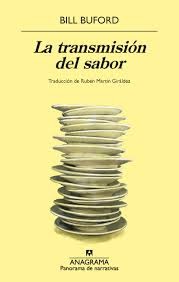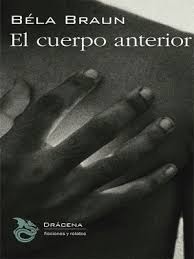
Original Language: English
Títutulus original: Dirt
Translation: Rubén Martín Giráldez
Year of publication: 2020
Valoración: Between recommended and okay
I believe that Americans, at least the holders of a certain culture, fascinates European, traditions, castles, a certain social refinement, religious rituals, things that surely do not understand because they are alien to them. Among them also gastronomy, a certain way of understanding the relationship with food, beyond the satisfaction of the physical need to feed.
Bill Buford is a prestigious and very restless journalist who was for example one of the founders of the famous literary magazine Graveland wrote a book about English Hooligans in which he related his personal experience within one of these violent groups. Later he was working in Italian kitchens for a while and, already put, he brought his Ramalaz The cradle of the haute cuisine of the neighboring country (well, if I am allowed the subsection is as if someone moved to Sheffield, I put in case, with the intention of soaking the foundations of football).
The book tells Buford’s experience from Punta to Cabo, from his initial contacts with a French chef in New York, to land later in Lyon and offer as Stagiaire in various restaurants, managing to start in a well -known artisanal bakery. Soon he will get a position in a Michelin star kitchen, and that is where everything acquires a special intensity. I suspiced with the newcomer rookie, competitiveness, despotic behaviors and an almost unbearable degree of tension would be said that they threaten the adventure of the aspiring chef, but Buford does not give up, and his effort to learn and live the French experience drives him to persevere without falter.
The truth is that it is enjoyed at times contemplating the effort to achieve a dish, the admiration that underlies work, the desire to assimilate not only knowledge but a certain way of understanding gastronomy, the art of elaborating and presenting, the philosophy of An activity that sometimes seems to approach a discipline, a science, a religion. This journalist is an irreducible guy, capable of traveling piles of kilometers to discover a specific type of flour or the peculiar species that are captured in the lakes of the region and anywhere else. Everything is a huge challenge to overcome, and that should serve, of course, to compose the story.
The problem is perhaps that when building it Buford seems somewhat less skilled than to achieve those complicated dishes. In my opinion it fails to get rid of a ballast also very American: the fondness for telling everything, entering all the details and consequently, not to hierarchize the information well, which causes the text to be made a little a little ball and not I finished taking a clear course. It is inevitable to feel that the book overflows enough of its more five hundred fifty pages, that everything could have had more criteria and less proper names, and the result would have been objectively much better.
There are also some somewhat surprising things. The word gastronomy, which I think I used a few times in the review, I would dare to say that it does not exist in the book. Buford’s immersion in the French culinary world, surely as intense as his previous experiences in Europe, has a lot of merit, and the level reached in his learning seems impressive to me, more taking into account that my capacity in that field barely exceeds the survival needs, and my knowledge of professional cuisine is reduced to some episode of Master Chef. But it seems to me that our author has not captured the social dimension that the kitchen has, at least in some regions of Europe. It is not enough to understand that all this carries behind a culture, to some extent an art, which transcends mere professional activity and makes gastronomy a sign of identity that is difficult to appreciate outside its context. Something that differentiates mere food, however sophisticated that it can become its elaboration.
Source: https://unlibroaldia.blogspot.com/2025/02/bill-buford-la-transmision-del-sabor.html


